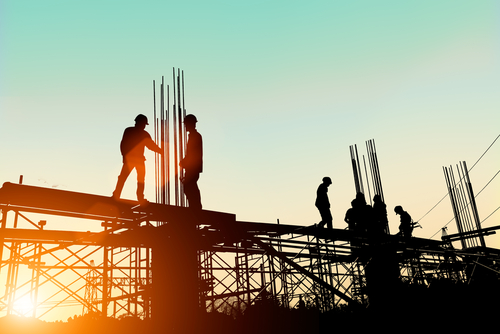
While Washington seems deadlocked in its election-year response to the COVID-19 pandemic, international investors see growing opportunities to strike deals on transportation infrastructure projects directly with state and municipal governments.
Voters across the United States still favor campaign-promised improvements to all types of public infrastructure, and going directly to the front lines with ideas for projects and the capital to get them off the ground may be a productive option rather than waiting for the Trump administration or a deadlocked Congress to take the lead.
“The pandemic hit and that, understandably, rearranged everyone’s priorities,” said DJ Gribbin, a former special assistant on infrastructure policy to the Trump administration. “But the good news is that infrastructure is still getting a fair amount of attention.”
Gribbin and the other speakers at the Sept. 15 virtual panel discussion organized by the Global Infrastructure Investment Association (GIIA) considered conditions to be ripe for private capital to make its presence known at state capitals and city halls nationwide that are looking for ways to jumpstart infrastructure projects as a means to create jobs and otherwise improve the lives of their constituents who still need to travel and transport products.
“We don’t need a lot of federal support,” said Gribbin, who is currently a consultant and Senior Operating Partner at Stonepeak Infrastructure Partners. “What we need is action at the state and local levels.”
Although COVID-19 may have sent many municipal governments reeling, they are still often blessed with airports and other enticing infrastructure assets to attract the attention of well-capitalized major investors eagerly looking for new projects in which to invest. “We have a trillion-dollar infrastructure gap in the country, yet private investors cannot find projects,” said Michele Nellenbach, Director of Strategic Initiatives at the Bipartisan Policy Center.
Moreover, the panel concurred that with Congress unlikely to act any time soon on major infrastructure spending and with gasoline tax revenues slumping, striking a private-public partnership (P3) deal with an investor group may be the only practical way to move forward. And investors are recognizing that they can play an active role in seeking out partners at the state and local levels and communicating with them directly as opposed to waiting for a still-elusive infrastructure spending bill to stumble off Capitol Hill.
“We can go to a city, county or state and tell them, ‘If you know you need a new bridge or school built, then it’s a perfect time to do a project,’” said Gribbin.
At the same time, investors could urge these local partners to allow the private sector access to existing infrastructure, particularly airports, and turn them into revenue generators that will provide funding for infrastructure maintenance and lesser projects that will address crowded roads, skimpy broadband service, and myriad other issues that the public can get behind.
Nellenbach said cash-strapped city governments often have no solid idea of the value of their existing infrastructure in terms of leasing or privatization. She urged city leaders to quickly begin taking inventory of their holdings to find out what their current needs are and, equally as important, what will be required down the road in terms of infrastructure expansion and maintenance.
By working with private investors rather than depending on the whims of Washington and the bond market to obtain financing, the GIIA panel saw advantages in terms of capital costs and in overall better planning for the long term. Tom Osborne, Executive Director of IFM Investors in New York City, urged changes to accounting rules to project costs out over a number of years rather than “how much it will cost just to get it built.”
“State and local governments are going to have to find new revenue sources,” Osborne said. “And it will have relevance to either a Democratic or Republican administration.”